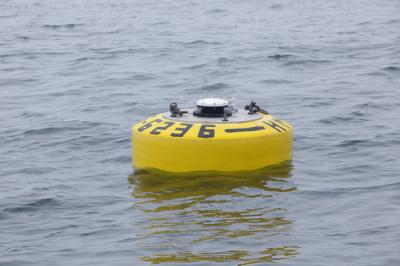An unmanned Wave Glider robot has been set off the US coast close to San Francisco. This robot complements the arsenal of technologies for observing marine creatures including great white sharks, in real-time.
 Wave glider
Wave glider
A new network of data receivers on fixed buoys includes the solar-powered glider and self-propelled wave. Signals from acoustic tags on creatures will be transmitted within 1,000 ft of distance. The research team on shore, led by Stanford University Marine Sciences Prof. Barbara Block, will receive the data.
The local array of fixed as well as mobile ocean transmitters along with long-endurance and affordable acoustic tags will hone 12 years of insights obtained from satellite-connected tags that are used for observation in Pacific journeys.
Led by Dr. Block, the research team focuses on establishing a "wired ocean" that includes live feeds of predator movements, which are transmitted by a series of "ocean WiFi hotspots" mounted on self-propelled Wave Gliders acoustic receivers or on moored buoys.
The technology forms the basis of Dr. Block's "Blue Serengeti Initiative”.
Measuring 7 ft in length, the yellow-colored Wave Glider and fixed buoys will carry out data transmission from creatures beyond the California coast near San Francisco during this summer and fall. Dr. Block anticipates expanding its ocean observing network along the entire west coast of North America for tacking creatures of varied size.
The tracking of animals can be monitored in real time using smartphone and tablet computer app.
Dr. Block and her team together with innovators from TOPP, EarthNC and Gaia GPS developed the "Shark Net," a new iOS app being offered at the Apple app store. This app will strengthen the direct, personal relationship between the public and wild marine animals.
The TOPP project involved electronic tags-based tracking of migrations of over 4,300 individual animals. A decade long research enabled TOPP team to resolve that West Coast of North America is a major hotspot for animals existing across the Pacific.
Based on these findings, the hot spots are being powered-up and acoustic detection buoys are being installed in key locations where the creatures gather. The app collects detection data from these buoys. Users are alerted when a creature (shark) pass the listening device within 1,000 ft.
The listening buoys and wave gliders, and especially the flexible interactive maps enable users to discover the regions inhabited by the white sharks in northern California that are tracked in real time. Within the map, the user can click on a media-rich gallery view that includes videos, photos, 3D interactive models such as Wave Gliders and buoys, and historical tracking data.
Details and descriptions of sharks were featured on the show "Great White Highway".